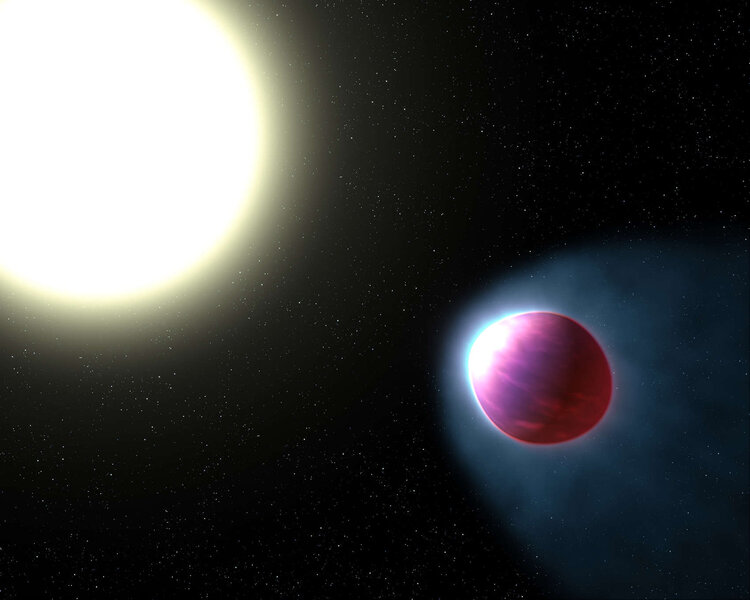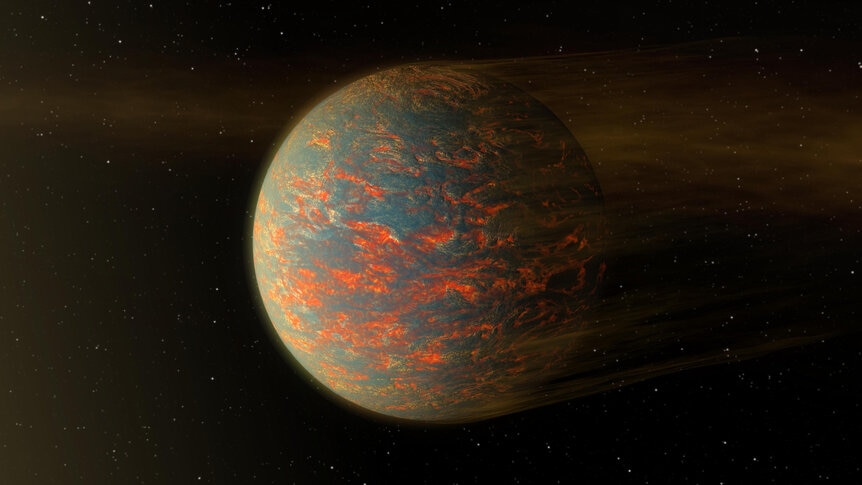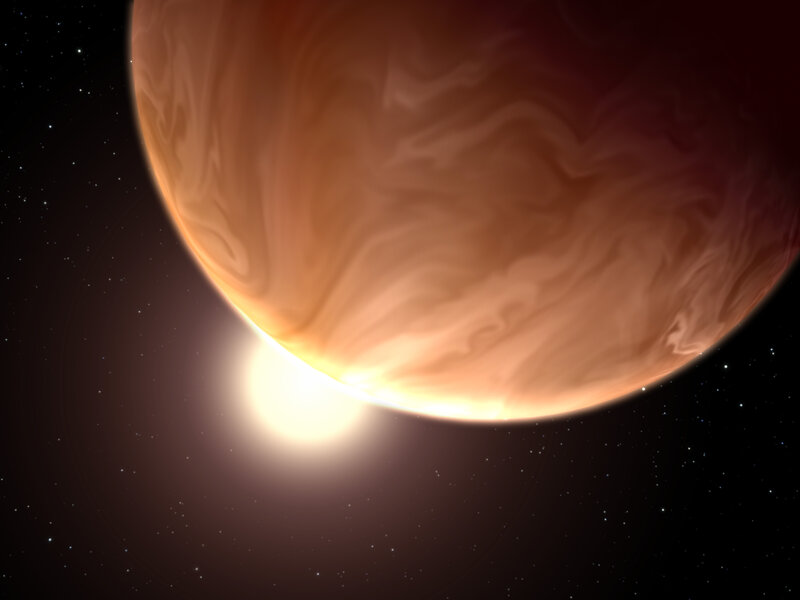Create a free profile to get unlimited access to exclusive videos, sweepstakes, and more!
Leaky mini-Neptune planets are losing their air and becoming super-Earths
This explains a kind of planet normally missing in solar systems.

In our solar system, Earth is the biggest of the terrestrial planets; the smaller, rocky worlds. The next planet bigger in size is Neptune, a gaseous giant four times Earth's diameter.
As we started to find exoplanets — aliens planets orbiting other stars — we started finding planets in that mass gap. Over time, enough were found to get some statistics, and these planets fall into two distinct mass ranges: "super-Earths" that are up to about 1.6 times Earth's diameter, and "mini-Neptunes," which are 2–4 times our planet's width.
But... that still leaves a mass gap! Where are the planets between 1.6 and 2 times Earth's size?
One idea is that when a forming planet gets to about 1.6 times Earth's size its gravity is strong enough to really start drawing in gas around it and it jumps to being a mini-Neptune (or larger). That may work for planets farther out from a newborn star where it's cold and gas plentiful, but what about ones closer in? An idea to explain those is that if a planet 1.6–2 times Earth's size is too close to the star it's so hot that it can't hold on to the atmosphere it already has. It leaks the gas away to space, losing mass and size until it becomes a super-Earth.
That latter has only been an idea until now, but two different newly discovered exoplanets around different stars both appear to be mini-Neptunes actively losing their atmospheres, and are well on their way to becoming super-Earths. This has never been seen before.
In both cases, the planets transit their host stars, passing directly between us and star, creating a mini-eclipse. We can't see the planets directly, but as starlight passes through the planets' atmospheres, different elements absorb specific wavelengths (colors) of light. For example, helium absorbs in the infrared, and hydrogen in the ultraviolet. By looking carefully at those colors it's possible to see a dip in the brightness of the starlight. Not only that, but as the gas moves away from the planet we see a Doppler shift in the color of the light, and, measured extremely carefully, that can reveal how much gas the planet is leaking and how rapidly.
The exoplanet HD 63433c orbits a young Sun-like star about 73 light years from Earth. Astronomers observed it using the Space Telescope Imaging Spectrograph on Hubble (link to paper). It has 2.67 times Earth's diameter, so it's a mini-Neptune, and it takes just 20 Earth days or so to orbit the star once. That puts it a mere 22 million kilometers from the star, so it's cookin'. So hot, in fact, that it should be losing air to space despite being about 7 times Earth's mass.
Sure enough, they see hydrogen absorbing light from the star, and from the Doppler shift it's expanding away from the planet at 50 kilometers per second — 180,000 km/hr! The planet's losing about 10% of the Earth's mass worth of gas every billion years. At that rate it'll take a while to lose enough gas to become a super-Earth, but one thing some planets have is time. Interestingly, there's another planet in that same system, a somewhat smaller mini-Neptune closer in to the star, and no atmospheric hydrogen loss was detected from it. Most likely it's so much hotter that it's already lost as much gas as it can. In that case, some planets have run out of time.
The other exoplanet the astronomers observed is HD 73583b, which is 2.8 times Earth's diameter orbiting a slightly cooler star 103 light years from us (link to paper). The planet circles the star every 6.4 Earth days, so again it's close-in, just 9 million kilometers from the star and very hot. Using the NIRSPEC spectrograph on the Keck telescope, they detected helium being lost from the planet, expanding away at about 20 km/sec. It's losing gas at a rate about twice that of HD 63433c, so again, over time it will likely become a super-Earth.
Weirdly, in this case, the gas appeared to be more red shifted, indicating that instead of being blown away from the star — light pressure and the stellar wind would do that, much like they push back on the tail of a comet — the gas is heading toward the star. It's difficult to explain this behavior. Either it's an observational error, which seems unlikely given the care they took to process the data, or there's an odd physical mechanism at play here. More observations should help the team understand what the planet is doing.
Both planets are puffy, bigger than you'd expect, because their atmospheres are enlarged by absorbing so much energy from their stars, just like air inside a hot-air balloon expands when heated. We've seen puffy planets before, but they've all been Jupiter-sized with masses hundreds of times Earth's. These two are much lower mass, and the first time this has been seen in this sized planet. Given the observations, it does indeed look like puffy mini-Neptunes do become super-Earths over time. It's not clear how much atmosphere might eventually be left once the process is over, but certainly it would be far thinner.
I'll note there are no super-Earths or mini-Neptunes in our solar system — or else we'd have a different name for them! But these are by far the most common kind of planet that we see around other stars. It's not clear why we don't have one — barring Planet 9, should it exist — but it is odd. We use our own planetary system as a template for understanding all the others, but it's entirely possible we're the weird ones. It just depends on your point of view.





























